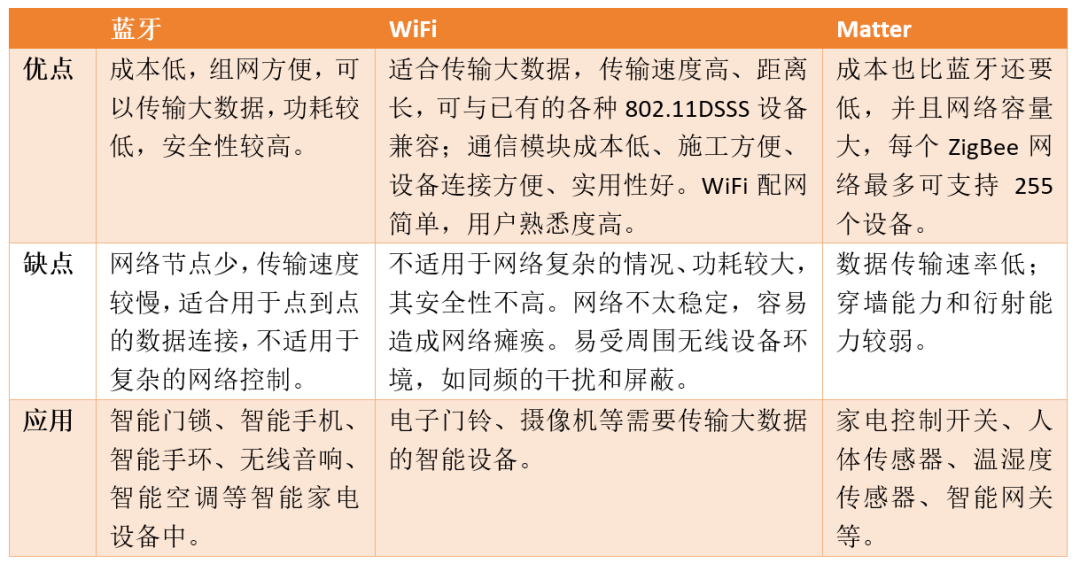Thanks to rising disposable incomes and a continued pursuit of quality family living, a diverse range of smart terminals is increasingly finding its way into everyday households. The escalating demand for smart home products has propelled the industry into a mature stage, welcoming the arrival of the complete home intelligence era.
In the realm of smart homes, the interconnectedness between smart devices plays a pivotal role. After traversing the phases of single-device intelligence and interconnectedness, the smart home 3.0 era has largely realized multi-device linkage and scenario-based control. Future advancements are set to focus on an overall enhancement of system intelligence.
This growing demand for interconnectivity among various smart products has placed new requirements on the most fundamental wireless short-range communication technologies.
Currently, the market offers various wireless solutions for smart homes, with mainstream technologies including Bluetooth, WiFi, and Matter.
Bluetooth:
Bluetooth, operating in the 2.4GHz ISM frequency band, is a short-range communication technology. Employing frequency hopping for full-duplex signals, it typically covers a working range of up to a 10m radius. Bluetooth is known for its low power consumption, simple networking, and widespread application across various electronic devices. The latest version, Bluetooth 5.0, boasts a maximum data transfer rate of 2Mbps, theoretically achieving an effective transmission distance of up to 300m. Bluetooth 5.0 also supports indoor positioning and navigation, serving as an indoor navigation beacon or a similar positioning device.
WiFi:
WiFi, a standard wireless local area network (WLAN) technology, typically utilizes the 2.4GHz UHF (Ultra High Frequency) or 5GHz SHF (Super High Frequency) ISM radio frequency bands. WiFi 6, compared to previous technologies, excels in features, speed, and coverage. Its overall functionality and efficiency are over four times that of its predecessor. WiFi 6 primarily alleviates network congestion by using Orthogonal Frequency Division Multiple Access (OFDMA) modulation, allowing up to 30 clients to share a channel simultaneously. This increases total capacity while reducing wait times for improved efficiency.
Matter:
Formerly known as ZigBee, Matter is one of the commonly used protocols for smart home products. Similar to Bluetooth, it features low power consumption, low cost, and short-range self-organizing wireless networks. Matter uses the IEEE 802.15 WPAN specification, supporting mesh network topology and providing data rates of 250kbps, 40kbps, and 20kbps, with an effective range generally between 10–100m. Zigbee mesh networks can include up to 65,000 devices.
As we delve into the intricacies of these wireless technologies, it’s essential to understand their distinct features and applications in the rapidly evolving landscape of smart homes. Whether it’s the low-power efficiency of Bluetooth, the robust performance of WiFi 6, or the self-organizing capabilities of Matter, each technology contributes uniquely to shaping the future of smart homes. Stay tuned for more insights into the latest advancements driving the industry forward.

This article was originally published by Ulink Media, the organizer of IOTE EXPO (IoT Expo in China).
Join us next year in Shanghai, and let’s shape the future of technology together!
To register IOTE 2024 Shanghai station:

















